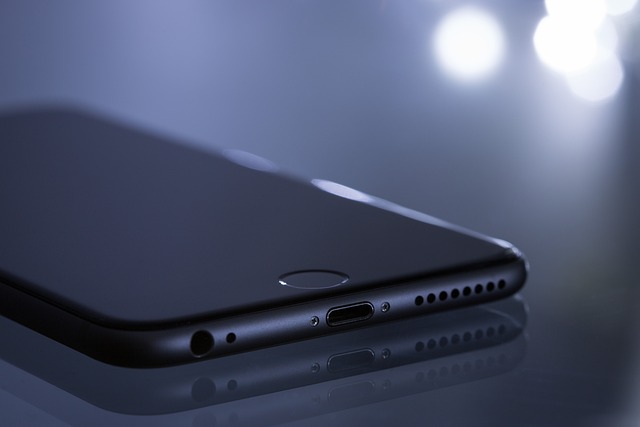Replacing an iPhone battery involves a series of precise steps to ensure device functionality and safety. Begin by creating a backup of your data using iCloud or iTunes/Finder to avoid data loss during the repair process. Power down your device, then carefully remove the back cover, disconnect the battery connector, and gently lift the battery with a spudger, being mindful of any adhesive that needs to be removed. Acquire a new battery compatible with your iPhone model, ensuring it aligns correctly with the battery contact tray within the device. Secure the new battery with fresh adhesive, reconnect all necessary cables including the battery connector and camera assembly if applicable, and replace the back cover for a firm connection. Power on your iPhone post-repair to test the new battery's performance, which should offer extended life and improved operation. Always follow manufacturer instructions or refer to specialized repair manuals for specific guidance on replacing an iPhone battery, ensuring you handle the new battery with clean, dry hands and properly dispose of or recycle the old one. Remember to keep your device charged during backups to maintain data integrity.
navigating the need to upgrade your iPhone’s battery? This guide provides a comprehensive walkthrough on how to effectively replace an iPhone battery. We delve into understanding your device’s battery lifespan, identifying signs that indicate it’s time for a replacement, and ensuring you have all the necessary tools and safety precautions in place. Learn the intricacies of backing up your data, following a detailed step-by-step guide to disassemble, remove, and install your new battery, and avoid common pitfalls. After the replacement, we’ll assist with restoring your iPhone from a backup and address post-replacement troubleshooting for optimal performance. Replacing an iPhone battery can seem daunting, but with our clear instructions, you’ll be well on your way to rejuvenating your device’s efficiency.
- Understanding Your iPhone's Battery Lifespan and Health
- Signs It's Time to Replace Your iPhone Battery
- Preparing for an iPhone Battery Replacement: Safety Precautions and Necessary Tools
- How to Backup Your iPhone Before a Battery Replacement
- Step-by-Step Guide to Replacing an iPhone Battery
- – Disassembling the iPhone Carefully
- – Removing Old Battery and Preparing for the New One
- – Installing the New Battery Correctly
Understanding Your iPhone's Battery Lifespan and Health

When considering a battery replacement for your iPhone, it’s crucial to understand its lifespan and health, which are key factors in determining when a new battery might be necessary. Over time, lithium-ion batteries in iPhones gradually lose their capacity to hold a charge. This natural degradation can lead to reduced performance and shorter operational times between charges. Monitoring your iPhone’s battery health through the Settings app provides insights into its maximum capacity and peak performance capability. A fully functional iPhone battery should maintain at least 80% of its original capacity after 500 complete charge cycles. If you notice that your device is no longer lasting as long as it used to on a single charge, or if it drains faster than usual, it might be time to replace the battery. Regular users typically experience a notable decline in battery performance after two to three years of use. For those looking to enhance their iPhone’s longevity and ensure optimal functioning, replacing the battery can restore its original lifespan and improve user experience significantly. It’s an effective solution that can be performed by authorized service providers or by individuals with the necessary skills and tools. Replacing an iPhone battery is a straightforward process for those familiar with small electronic repairs, but if you prefer professional assistance, visiting an Apple Store or a certified Apple repair center is recommended to ensure your device is handled with care and expertise.
Signs It's Time to Replace Your iPhone Battery

When your iPhone’s performance begins to wane, particularly in terms of battery life, it may be time to consider replacing the battery. One of the most evident signs is if your device consistently drains faster than it used to, even when your usage patterns have remained the same. This can manifest as your phone shutting down unexpectedly or not holding a charge for its advertised duration. Another indicator is a swollen or bloated battery, which is a clear safety concern and should be addressed promptly. Additionally, if you notice that your iPhone is experiencing random shutdowns or restarts without provocation, this could also point to battery-related issues. Performance slowdowns during heavy use, such as when playing graphics-intensive games or multitasking with multiple apps, can also suggest that the battery’s capacity has degraded and a replacement might be necessary. To address these issues, consulting Apple’s official guidelines or visiting an authorized service provider to assess the battery health can guide your decision on whether to proceed with a replacement. Regular maintenance and monitoring of battery performance through available iOS features can help you identify when it’s time for an iPhone battery replacement.
Preparing for an iPhone Battery Replacement: Safety Precautions and Necessary Tools

When preparing to replace an iPhone battery, safety and precision are paramount. Before proceeding with the replacement, ensure your work area is well-ventilated due to the potential release of residual chemicals from the old battery. It’s crucial to discharge the iPhone completely; failing to do so can pose a risk of electrical shock or battery explosions when it’s being handled. Additionally, ground yourself by touching a metal object connected to the electrical system of your home to avoid any static electricity issues.
For the task at hand, you will need a set of precision tools and replacement components specific to your iPhone model. Gather a pentalobe screwdriver, a suite of spudgers or plastic opening tools, a set of tri-point screwdrivers, a suction handle for lifting adhesive components, a battery replacement unit that’s compatible with your iPhone model, and a replacement adhesive if required for the new battery. Ensure these tools are clean and in good working order to avoid damaging any components during the process. With these preparations complete, you’re ready to safely and effectively replace your iPhone battery, thereby extending its life and improving performance.
How to Backup Your iPhone Before a Battery Replacement

Prior to replacing an iPhone battery, it’s crucial to safeguard your data and ensure that you can restore your device to its previous state post-repair. To accomplish this, initiate a backup of your iPhone using either iCloud or iTunes (or Finder if you’re on a Mac with macOS Catalina or later). Connect your iPhone to your computer and open iTunes (for Windows) or Finder (for macOS Catalina and later). Click on the iPhone when it appears in the device list, then select “Back Up Now” to create a copy of your device’s data. For an iCloud backup, navigate to Settings on your iPhone, tap on your Apple ID at the top, and select ‘iCloud’. Tap ‘Backup’ and make sure ‘Back Up Now’ is tapped to sync your data to the cloud. Ensuring that your backup is current and complete will prevent any loss of important information, making the battery replacement process less stressful and more straightforward.
Once you’ve initiated a backup, verify its completion by going to the iCloud settings on your iPhone or by checking the date and time of the last backup in iTunes or Finder. This step is vital as it ensures that all your contacts, photos, app data, and settings are preserved. After confirming the backup, you can proceed with the battery replacement with confidence, knowing that your iPhone’s content is securely backed up and can be restored if necessary. Remember to keep your device charged during this process, as a low battery may affect the backup and subsequent repair procedures.
Step-by-Step Guide to Replacing an iPhone Battery

– Disassembling the iPhone Carefully

When contemplating the replacement of your iPhone battery, a meticulous disassembly process is paramount to avoid damage to both your device and yourself. Begin by powering off your iPhone and ensuring it has less than 60% charge, as a fully charged battery can swell or react unpredictably during the repair process. Gather the necessary tools: a pry tool, plastic opening tools, a tri-point screwdriver, and suction handles. These tools are designed to navigate the precision components of an iPhone without causing breakage.
The disassembly starts with removing the screen protector, followed by peeling back the adhesive around the perimeter of the display assembly. Proceed carefully to avoid tearing the cables or causing any static discharge. Use the plastic opening tools to gently pry open the side edges of the display, being mindful not to insert the tool too deeply and damage the internals. Once the display is freed, set it aside with the screen facing down to prevent liquid damage. Next, remove the eight screws securing the metal frame holding the battery in place, being sure to store them in a small tray or their original bag to avoid losing any. With the screws removed, carefully disconnect the battery connector before proceeding to lift the battery assembly out of the device. Throughout this process, maintain a gentle and controlled pace, ensuring all components are treated with care during their removal. Properly handling each part will facilitate a smoother replacement and reduce the likelihood of encountering issues post-repair.
– Removing Old Battery and Preparing for the New One

When considering replacing your iPhone battery, it’s crucial to approach the task with care and precision. The first step involves powering down your device to avoid any potential electrical interference during the process. Once your iPhone is off, you’ll need to remove the back cover, which typically requires a small flathead screwdriver or pentalobe tool to unscrew and pry open. After accessing the internal components, locate the old battery, which is usually held in place by several adhesive points and screws. Carefully disconnect the battery connector, which is a thin ribbon cable, to ensure that no power is supplied to the battery while you work. Use a spudger or plastic opening tools to gently lift and remove the adhesive from the edges of the battery. Be sure to detach any additional cables, like the camera assembly connectors if your model requires it. Once the old battery is free, set it aside safely, as it should not be reused or discarded improperly.
Before installing the new iPhone battery, prepare your workspace and ensure you have all the necessary tools and components on hand. The new battery should match the make and model of your device for optimal performance. Carefully place the new battery in its designated spot, aligning it with the tray inside your iPhone. Reconnect any cables that were disconnected during the removal process, ensuring each connection is secure. Begin with the battery connector, followed by any other components like the camera assembly if applicable. Once reassembled, apply fresh adhesive to secure the new battery in place. After everything is properly in position, replace the back cover, and you’re ready to power on your iPhone with a newly replaced battery. Remember to handle the new battery with clean, dry hands to avoid any contamination that could affect its functionality.
– Installing the New Battery Correctly

When it comes time to replace an iPhone battery, precision and attention to detail are key to ensuring your device functions optimally post-repair. Begin by powering down your iPhone and then proceed to remove the screws securing the back cover. Carefully detach the back cover and the adhesive holding the battery in place. Once you’ve safely removed the old battery, prepare the new one by aligning it with the battery contact tray within the device. To install the new battery correctly, follow these steps: gently insert the battery into its compartment, ensuring that the plus (positive) and minus (negative) ends of the battery are properly aligned with the corresponding contacts on the iPhone’s motherboard. Once in position, reapply the adhesive if necessary and securely affix the new battery to prevent any shifting during operation. Reattach the battery tray, making sure it is firmly connected to the battery. Next, replace the back cover, ensuring that it snaps into place and all screws are tightly secured. Power on your iPhone to verify that the replacement battery is functioning correctly. If everything is in order, your iPhone should be operational with a new, long-lasting battery. Remember to follow the manufacturer’s guidelines or consult a professional repair guide for specific model nuances when performing this task.
Replace an iPhone battery successfully, one must first comprehend the typical lifespan and health indicators of their device’s battery. Recognizing the signs that signal a battery’s decline is crucial for maintaining optimal performance. Before proceeding with the replacement, ensure you have all the necessary tools and observe safety precautions to avoid injury or damage to your iPhone. It’s equally important to backup your data to prevent any loss during the process. The step-by-step guide provided outlines the careful disassembly required to access the old battery, its safe removal, and the proper installation of a new one. By following these precise steps, you can effectively replace your iPhone battery and restore its efficient operation. Remember that maintaining your device’s battery health through such replacements can significantly extend its lifespan and enhance overall user experience.
